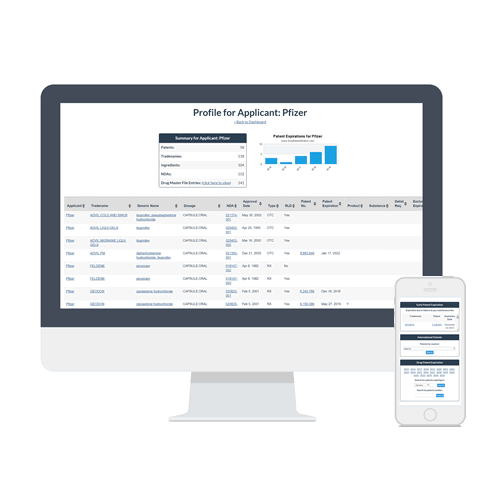
In the ever-evolving pharmaceutical landscape, savvy businesses are constantly on the lookout for untapped markets and lucrative opportunities. One area that has garnered significant attention is the realm of low-competition generic drugs. These are off-patent medications that, for various reasons, have yet to attract a significant number of generic manufacturers, creating a potential goldmine for those willing to navigate the complexities of this niche market.
Table of Contents
The Allure of Low-Competition Generics
The appeal of low-competition generic drugs lies in their potential for substantial profit margins. When a branded drug loses its patent protection, the market is typically flooded with generic alternatives, driving prices down through intense competition. However, in certain cases, the number of generic manufacturers remains limited, allowing those present to command higher prices and reap the rewards of a less crowded playing field.
“The generic drug market is not a homogenous marketplace. For some classes of drugs, there are untapped opportunities for significant cost savings.” – Martin VanTrieste, President and CEO of Civica Rx
One key factor contributing to the lack of competition is the size of the potential market. Drugs with relatively small patient populations may not attract the interest of major generic manufacturers, as the potential revenue may not justify the investment required for regulatory approvals and manufacturing setup.[1] This creates an opening for smaller, more agile players to capitalize on these niche opportunities.
Identifying Low-Competition Opportunities
Identifying low-competition generic drug opportunities requires a thorough understanding of the market dynamics and a keen eye for potential. Here are some strategies to uncover these hidden gems:
- Monitor Patent Expirations: Keeping a close watch on upcoming patent expirations can provide valuable insights into potential low-competition opportunities. Drugs with complex formulations, delivery mechanisms, or niche therapeutic areas may be less appealing to larger generic manufacturers, creating a window of opportunity for others to enter the market.
- Analyze Existing Competition: Conducting a comprehensive analysis of the existing competition for a particular generic drug can reveal gaps in the market. If only one or two manufacturers dominate a specific drug, it may indicate an opportunity for additional players to enter and potentially disrupt the market dynamics.
- Leverage Regulatory Expertise: Navigating the complex regulatory landscape is crucial in the generic drug industry. Companies with a deep understanding of the regulatory requirements and approval processes may have an advantage in identifying and capitalizing on low-competition opportunities before others.
- Explore Niche Therapeutic Areas: Certain therapeutic areas, such as orphan drugs or specialized treatments, may have fewer generic alternatives due to their smaller patient populations or complex manufacturing processes. Focusing on these niche areas can uncover opportunities with potentially lower competition.
Capitalizing on Low-Competition Opportunities
Once a low-competition generic drug opportunity has been identified, it’s essential to develop a strategic approach to capitalize on it effectively. Here are some key considerations:
- Regulatory Compliance: Ensuring strict adherence to regulatory requirements is paramount. Investing in a robust regulatory affairs team and maintaining close communication with regulatory bodies can streamline the approval process and mitigate potential delays.
- Manufacturing Capabilities: Establishing efficient and cost-effective manufacturing processes is crucial for maintaining a competitive edge. Partnering with experienced contract manufacturing organizations (CMOs) or investing in dedicated manufacturing facilities can provide the necessary infrastructure to meet demand.
- Distribution and Marketing Strategies: Developing a comprehensive distribution and marketing strategy is essential for capturing market share. Building relationships with wholesalers, pharmacies, and healthcare providers can facilitate product awareness and adoption.
- Pricing Strategy: Striking the right balance between profitability and market competitiveness is crucial. While low-competition opportunities may allow for higher pricing, it’s essential to remain vigilant about potential new entrants and adjust pricing strategies accordingly.
Challenges and Considerations
While low-competition generic drug opportunities present significant potential for profitability, they are not without challenges. Regulatory hurdles, manufacturing complexities, and the ever-present threat of new market entrants are just a few obstacles that companies must navigate.
Additionally, ethical considerations surrounding drug pricing and access to affordable healthcare must be carefully weighed. While capitalizing on low-competition opportunities can be lucrative, it’s essential to strike a balance between profitability and ensuring patient access to essential medications.
Conclusion
In the dynamic world of generic pharmaceuticals, low-competition opportunities can provide a lucrative avenue for businesses willing to navigate the complexities of this niche market. By identifying these opportunities through diligent market analysis, leveraging regulatory expertise, and developing strategic manufacturing and distribution plans, companies can position themselves for success in this highly competitive industry.
References:
[1] Addressing the Lack of Competition in Generic Drugs to Improve Healthcare Quality and Safety [https://www.ncbi.nlm.nih.gov/pmc/articles/PMC6206353/]
[2] Competition in Generic Drug Markets [https://www.nber.org/digest/nov17/competition-generic-drug-markets]
[3] The FDA Could Do More to Promote Generic Competition: Here’s How [https://healthpolicy.usc.edu/research/the-fda-could-do-more-to-promote-generic-competition-heres-how/]
[4] Generic Drug Price Tags: Too High. And Too Low. Competition Can Help Create an In-Between [https://www.managedhealthcareexecutive.com/view/generic-drug-price-tags-too-high-and-too-low-competition-can-help-create-an-in-between-]
[5] Generic Competition and Drug Prices [https://www.fda.gov/about-fda/center-drug-evaluation-and-research-cder/generic-competition-and-drug-prices]
Citations:
[1] https://www.ncbi.nlm.nih.gov/pmc/articles/PMC6206353/
[2] https://www.nber.org/digest/nov17/competition-generic-drug-markets
[3] https://healthpolicy.usc.edu/research/the-fda-could-do-more-to-promote-generic-competition-heres-how/
[4] https://www.managedhealthcareexecutive.com/view/generic-drug-price-tags-too-high-and-too-low-competition-can-help-create-an-in-between-
[5] https://www.fda.gov/about-fda/center-drug-evaluation-and-research-cder/generic-competition-and-drug-prices


